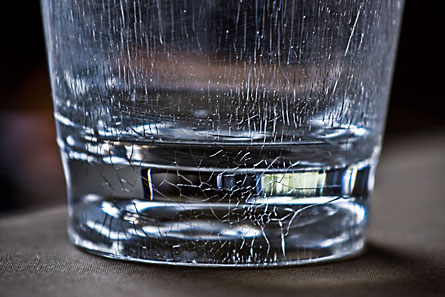When BPA-free isn’t
The Winnipeg Free Press reported some disturbing news today. Tests by the Canadian government, it said, have found that some plastics labeled as being free of bisphenol A — an estrogen-mimicking chemical — actually contain the potentially toxic substance.

Canwest News Service unearthed the new government data along with correspondence from government researchers through use of the Access to Information Act — the Canadian equivalent of the Freedom of Information Act.
Animal studies have demonstrated a host of deleterious effects from ingestion of BPA, the basic building block of polycarbonate plastics. And human studies have confirmed that use of polycarbonate food-ware containers releases BPA that can later be found in the body.
Because so many baby bottles and sippy cups have been made from BPA, several municipalities have passed ordinances to ban sales of polycarbonate food ware that might be used by children.
Last year, Canada became the first nation to announce it would ban polycarbonate baby bottles over concerns about BPA health risks. Almost immediately, a host of polycarbonate alternatives — labeled BPA-free — began springing up in the marketplace.
Health Canada researchers were attempting to confirm that these alternatives were indeed BPA-free. Of the nine brands of baby bottles it tested, two hosted the hormone mimic, Canwest’s Sarah Schmidt reports. The name of each brand was blacked out in the materials that had been turned over to Canwest.
According to Schmidt’s account, “The study says ‘traces’ of the toxin [sic] were found in ‘BPA-free’ bottles while internal correspondence between a department official and the lead scientist went further, characterizing the amounts in two brands as ‘high readings.’”
It’s no surprise how BPA gets into polycarbonate food ware. The plastic consists of BPA molecules that have been chemically linked into long chains. However, some of the BPA feedstock never gets bound up into these polymeric chains, which means it’s free to leach into foods and beverages that later make contact with the plastic. The polymers can also break down when the plastic is heated – such as by introducing hot foods, running polycarbonate materials through a dishwasher (even the top rack), or microwaving materials in this plastic. One hint that this breakdown has started: Polycarbonate’s formerly crystal clear appearance takes on a distinctive crackling (see photo).
The big question mark — one that isn’t answered by the Health Canada data — is why BPA should show up in a plastic whose recipe doesn’t include this feedstock. The supposition is that it must be due to some type of cross contamination in the production facilities.
And whether the amount of BPA that Health Canada turned up is especially worrisome remains to be seen. The Canadian press accounts don’t give the values. But regardless of how much is there, the presence of this toxicant in bottles labeled free of it constitutes fraud.
I put a call in to Health Canada first thing this morning to confirm details of the Free Press report and see if I can’t root out additional details. I’ll update this account when I hear back — hopefully yet this morning.
UPDATE…~4 P.M.
I just heard back from the news office at Health Canada. The data reported this morning evidently came at least in part from a paper published last month in a journal with the unwieldy title: Food Additives & Contaminants: Part A: Chemistry, Analysis, Control, Exposure & Risk Assessment. All six of the report’s authors work for Health Canada in Ottawa.
They report a leaching from polycarbonate baby bottles into materials meant to simulate food or beverages at levels ranging from roughly 0.1 microgram per liter (simulating watery beverages) to to 2.4 micrograms/l (simulating fatty foods). Such values were, of course, to be expected, based on earlier work by chemists at the U.S. Food and Drug Administration and other labs.
But the Canadian scientists also detected “trace levels of BPA” from non-polycarbonate bottles and bottle liners. The abstract (which is all I’ve gotten access to thus far) doesn’t identify what constitutes “traces”. But for perspective, the limit of detection for BPA in these tests was a value around a billionth of a gram per liter.
Conclude the authors: “This study indicated that non-polycarbonate plastic baby bottles, baby bottle liners and glass baby bottles might be good alternatives for polycarbonate bottles.”







